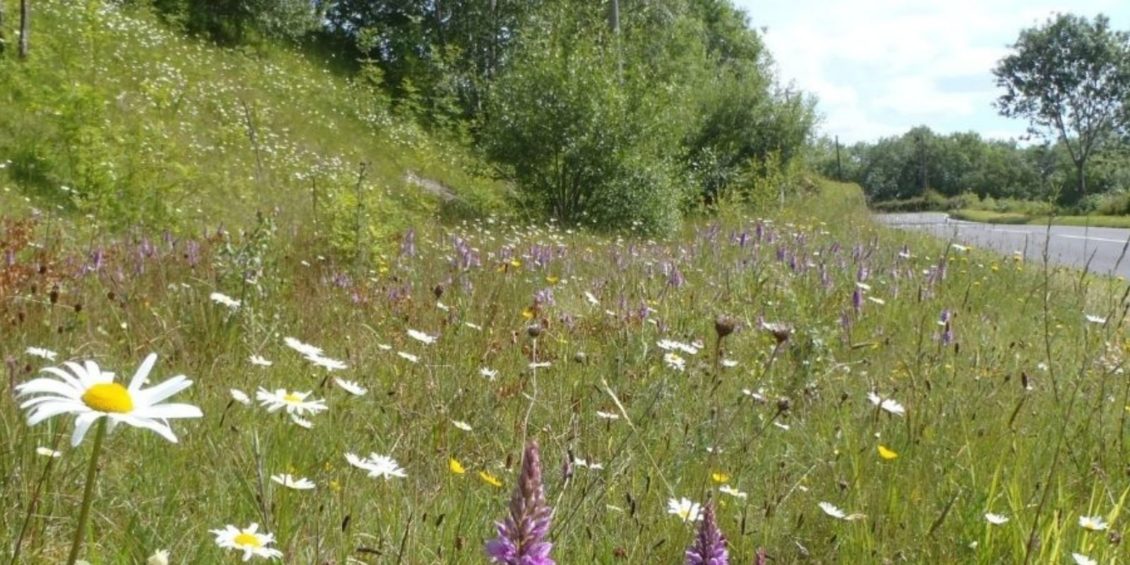With 127 Roadside Verge Nature Reserves (RVNR’s) on the county road network, Powys roads verges are currently seeing an abundance of biodiversity.
Powys County Council, along with contractors, work hard to conserve the wildlife inhabiting the roadsides of the county. A number of current initiatives are underway to leave whole sections of verges uncut or with their own individual management plans to benefit the species present on that site.
Steps to ensure the preservation of a wide range of wildlife on the county’s verges include timing scheduled grass cuts to prolong nesting and breeding seasons in many species of animals and birds, and to allow flowers to set seed and invertebrates, such as butterflies, to complete their life cycles. To further improve verge management for wildlife Powys County Council have purchase cut and collect machinery, thanks to funding from Welsh Government’s Local Places for Nature scheme, which will encourage more wildflowers to grow.
Urban verges (areas within 30mph speed limits on county roads) receive three cuts per year. This has recently been altered so that much more of the verge is left uncut on the first and second cuts with only a single swathe being cut, to support wildlife. Rural verges have one cut per year, except where visibility is required.
“Maintaining grass verges is a balance between ensuring the safety of road and path users is not compromised and preserving wildlife.” Explains Head of Highways, Transport and Recycling. “However, with careful management, it is possible to do both.
“The urban grass verges are where we are keen to make even more changes to the way they have previously been managed. By working with local groups and town and community councils, we can identify areas that can be left uncut, making improvements year on year on the number of areas designated for conserving biodiversity in the county.
“There are approximately 5500 km of surfaced roads in Powys, and we are working hard to identify areas along our extensive road network where grass verges can be managed in a way which increases their biodiversity is really beneficial to our local environments.”








Leave a Reply
View Comments